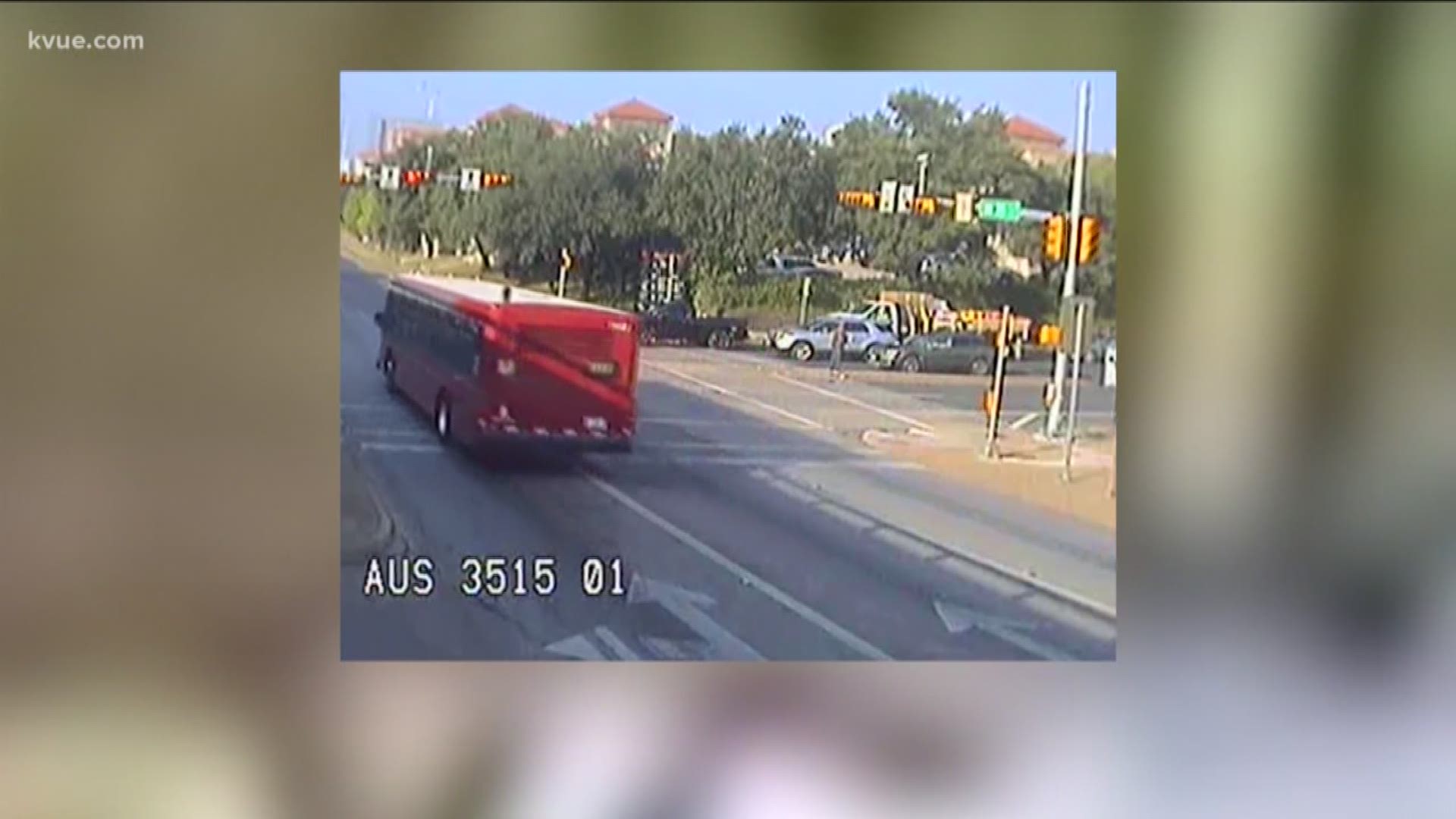AUSTIN, Texas — Editor's note: The above video states that the VP of Bus Operations at Capital Metro is named Dottie Walker. Her name is Dottie Watkins.
Lawmakers approved a bill banning red-light cameras. In June, Gov. Greg Abbott signed the bill into law.
The City of Austin quickly ceased its red-light camera operations two days later. Those cameras held everyone to the same standard, including government workers on the job.
In the last five years, the KVUE Defenders found Austin’s red-light camera citations totaled 185 videos of non-emergency government employees running red lights. The citations went back to several agencies including Capital Metro bus drivers, City of Austin employees and school bus drivers breaking the law.
The most violations came back to Capital Metro, which covers more than 7 million more miles a year than all City of Austin non-emergency vehicles.
We took our findings to Dottie Watkins, vice president of bus operations for Capital Metro.
“Yeah, that’s absolutely a situation where we weren’t paying close enough attention,” she said, looking at a video.
Records show City of Austin employees from all departments received 46 citations at red-light camera intersections. Austin Independent School District drivers were caught 11 times. Capital Metro drivers received 97 violations caught on the cameras.
“I think if you’re going to compare entities and compare vehicles, you really do have to look at the vehicle miles traveled,” Watkins said.
Records show Capital Metro covers 32,730,040 miles a year and has a smaller fleet than all other non-emergency City of Austin department combined.
A Capital Metro bus driver averages more than 30,000 miles a year. A City of Austin driver averages a 3,800.
In all, most of all tickets come back to southbound Interstate Highway 35 frontage road and 15th Street.
Austin Police Detective Patrick Oborski said police do not have the manpower to launch a red-light camera ticketing operation but will continue to watch intersections while on patrol.
“Patrol officers or traffic officers are welcome to go look for anything that they can find. Or if they see something in front of them, we encourage them to take action,” Oborski said.
The main intersection for Capital Metro violations also come back to southbound I-35 at the 15th Street traffic signal, but no bus route runs south through the intersection.
“It doesn’t sound good. It’s quite dangerous for this, for the pedestrians as well as the cars,” said Mike Kammlah, an occasional Capital Metro bus rider.
“Obviously, running a red light is not operating safely,” Watkins said. “We do look at numbers like that in the context of our overall driving environment … any one is too many.”
Court records show the severity of bus wrecks. The plaintiff's, Jose Ramon Avila-Paloma, original petition can be seen here. The defendant's original answer can be seen here.
RELATED: Video shows cyclist run red light, cross several lanes of traffic at Downtown Austin intersection
Records show a Capital Metro driver hit Avila-Paloma from behind. Injuries to Avila-Paloma include “disfigurement.”
Capital Metro denied all allegations, claimed partial sovereign immunity from suit and liability, limited what they would pay, said the plaintiff failed to provide the governmental unit with notice of claim, and they failed to obtain the governmental unit’s consent to sue, all citing Texas laws.
“Safety violations are a very serious thing and can result in termination of employment,” Watkins said.
Drivers get disciplined based on a point system.
- Unsafe maneuver – one point
- Minor traffic violation, like a red-light violation – two points
- Use of a cell phone – three points
Failure to report a ticket or incident will result in automatic termination.
After initial probation, a driver cannot get six or more points in any rolling 18-month period.
One incident can have multiple safety violations. A driver will be fired if they have three separate incidents in one year.
“All of our operators, in addition to being issued disciplinary action, are going to be coached or retrained, depending on what exactly happened in the incident,” Watkins said.
Watkins said drivers do not get disciplined if their schedule runs behind.
“We definitely want our services to run reliably but what we train our operators is safety is first, service is second, their schedule is third,” she said.
If a driver gets a ticket, the driver pays it.
“There’s a need for buses and there is a need for trains, but we also have cars. We ought to work together,” Kammlah said.
Inertia-based monitoring devices are on each bus. Capital Metro managers can see speed, hard braking, sharp turns, and video of what’s going on. Any change would be noted and reviewed.
Each driver receives monthly training as well as two in-depth training days a year.
With the cameras gone, it will be up to the public to report these violations.
PEOPLE ARE ALSO READING:

